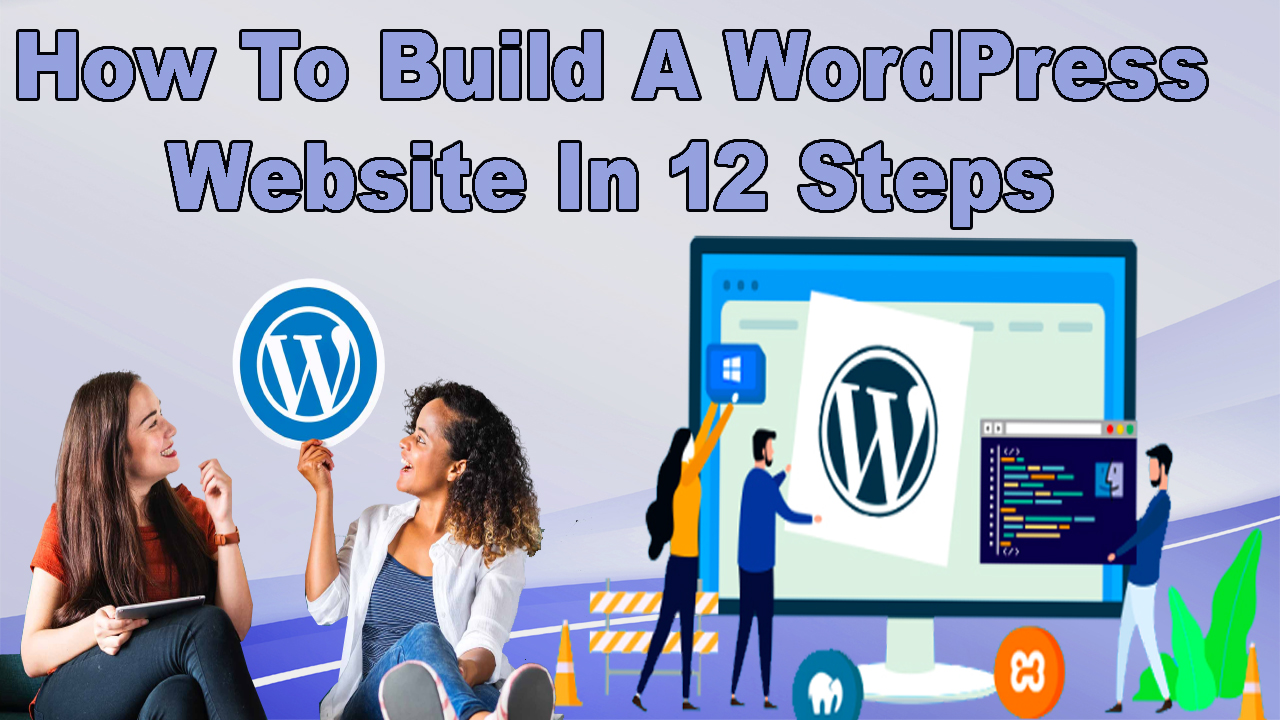A Comprehensive Guide to Creating Your WordPress Website
in today’s digital age, having a strong online presence is essential, whether you’re a business owner, blogger, artist, or entrepreneur. One of the most popular and versatile platforms for creating websites is WordPress. This comprehensive guide will walk you through the step-by-step process of building a WordPress website, ensuring that your online venture is a success.
Define Your Website's Purpose and Identify Your Target Audience
You need to establish a clear understanding of what your website’s main purpose is. Is it a blog, an e-commerce platform, a portfolio, or a business website? Once you have a distinct purpose in mind, it’s essential to identify your target audience, as this will shape the content, design, and functionality of your site. Understanding your audience’s needs, interests, and preferences is key to creating a website that resonates with them.
Select the Perfect Domain Name to Represent Your Brand
Choosing a domain name is akin to selecting your website’s address on the internet. It should reflect your brand, be easy to remember, and ideally, feature keywords related to your content or business. Your domain name serves as the digital identity of your site, so it’s crucial to pick one that aligns with your brand’s image and objectives.
| Action | Additional Information |
| Register a Domain Name | Choose a domain name that reflects your brand or content. It’s your website’s address on the internet. You’ll need to purchase and register this domain name through a domain registrar. |
| Choose a Web Hosting Provider | Select a web hosting provider based on factors like performance, support, scalability, and pricing. Your hosting provider is where your website’s files will be stored and made accessible on the internet. |
| Set Up Hosting Account | Sign up for a hosting account, providing your contact information and choosing a hosting plan that suits your website’s needs. Pay attention to factors such as server type (shared, VPS, dedicated) and server location. |
| Access the Hosting Control Panel | After setting up your hosting account, you’ll receive login credentials to the hosting control panel. Commonly used control panels include cPanel and Plesk. Access it to manage your hosting environment. |
| Install WordPress | Many hosting providers offer one-click WordPress installation. You can use tools like Softaculous or Fantastico in your control panel to install WordPress with ease. Alternatively, you can manually install WordPress by downloading it from the official website and uploading it to your hosting server. |
| Configure Basic Settings | Upon installation, you’ll need to set up your WordPress site’s basic settings. This includes defining your site title, tagline, and other general settings. You can access these settings through the WordPress dashboard. |
| Choose a Theme | Select a WordPress theme that matches your website’s style and functionality. Themes can be free or premium, and they control the visual appearance of your site. Customize your chosen theme to suit your branding. |
| Install Essential Plugins | Enhance your website’s functionality by installing essential plugins. Consider tools for SEO, security, contact forms, and social media integration. Explore the WordPress Plugin Repository for options. |
| Create Content | Begin populating your website with content. Create pages and posts, and organize them into categories. You can add text, images, videos, and other media to engage your audience. |
| Optimize for SEO | Implement SEO best practices by selecting relevant keywords, optimizing meta descriptions, and improving site speed. Consider an SEO plugin to streamline optimization efforts. |
| Enhance Security | Strengthen website security with strong passwords, regular updates, and security plugins. Protect against common threats such as malware and hacking attempts. |
| Launch Your Website | After thoroughly preparing and testing your website, it’s time to make it live. Ensure that all content is in place, all settings are configured correctly, and your website is functioning smoothly before the official launch. |
Choose Reliable and Scalable Hosting Services for Your Site
Your choice of web hosting is paramount to the performance and accessibility of your website. Look for hosting providers that offer reliability, speed, and scalability to accommodate the growth of your site. A well-hosted website ensures that visitors can access your content without interruptions, contributing to a positive user experience.
Install WordPress and Master the Basics of Website Setup
Once you have your domain and hosting in place, it’s time to install WordPress, one of the most popular content management systems. WordPress simplifies the process of website creation and management. After installation, acquaint yourself with the basics, such as customizing themes, creating pages, and configuring settings to align with your site’s objectives.
Design Your Website with a Focus on User Experience
The design of your website is critical in engaging and retaining visitors. Focus on creating a clean, user-friendly layout that is visually appealing and easy to navigate. Pay attention to aspects such as color schemes, typography, and overall aesthetics. Remember that a positive user experience can keep users coming back for more.
Enhance Functionality with Essential Plugins and Tools
WordPress offers a vast library of plugins and tools that can extend the functionality of your website. Incorporate essential plugins for tasks such as SEO optimization, security, and contact forms. These plugins help your site perform better and offer additional features to enhance user experience.
Create Engaging Content and Optimize for Search Engines
Content is the heart of your website. Develop high-quality, relevant content that resonates with your audience. Additionally, optimize your content for search engines (SEO) to ensure your site ranks well in search results. SEO practices include using relevant keywords, creating meta descriptions, and improving site speed and performance.
Implement Robust Security Measures to Protect Your Site
Website security is paramount to protect your site and user data. Implement robust security measures, including using strong passwords, regularly updating your WordPress and plugins, and considering security plugins to fortify your website against potential threats.
Optimize Website Speed and Performance for User Satisfaction
A fast-loading website enhances the user experience and can positively affect your search engine rankings. Optimize your website’s performance by minimizing large media files, leveraging browser caching, and employing content delivery networks (CDNs).
Incorporate Social Media Integration for Wider Reach
Integrate your website with social media platforms to expand your online presence and engage with a broader audience. Social media integration allows for easy sharing of content and provides an additional channel for communication with your audience.
Monitor and Analyze Website Metrics for Continuous Improvement
Regularly monitor and analyze website metrics, such as traffic, user behavior, and conversion rates. These insights help you understand how your site is performing and identify areas for improvement. Make data-driven decisions to enhance your website’s effectiveness.
Launch Your WordPress Website and Plan for Future Growth
After thorough preparation and testing, it’s time to launch your WordPress website. Ensure everything is in place, and that your website is functioning smoothly. Once launched, continue to plan for future growth by adding new content, features, and functionality to keep your site dynamic and aligned with your evolving goals.
Summery Of The Whole Article
Building a WordPress website can seem like a daunting task, but by following this comprehensive guide, you can confidently navigate the process and create a successful online platform. Whether you’re a blogger, business owner, or creative professional, WordPress empowers you to establish a strong digital presence, and with the right guidance, your website can become a powerful tool for achieving your online goals. So, why wait? Start building your WordPress website today and embark on your digital journey.

Dilshad Mushtaq is the founder and CEO of Best SEO Zone which is a prominent digital marketing agency based in Pakistan Since 2010. He is a professional website developer & Digital Marketer who can create any website and rank it on Google Page One.




